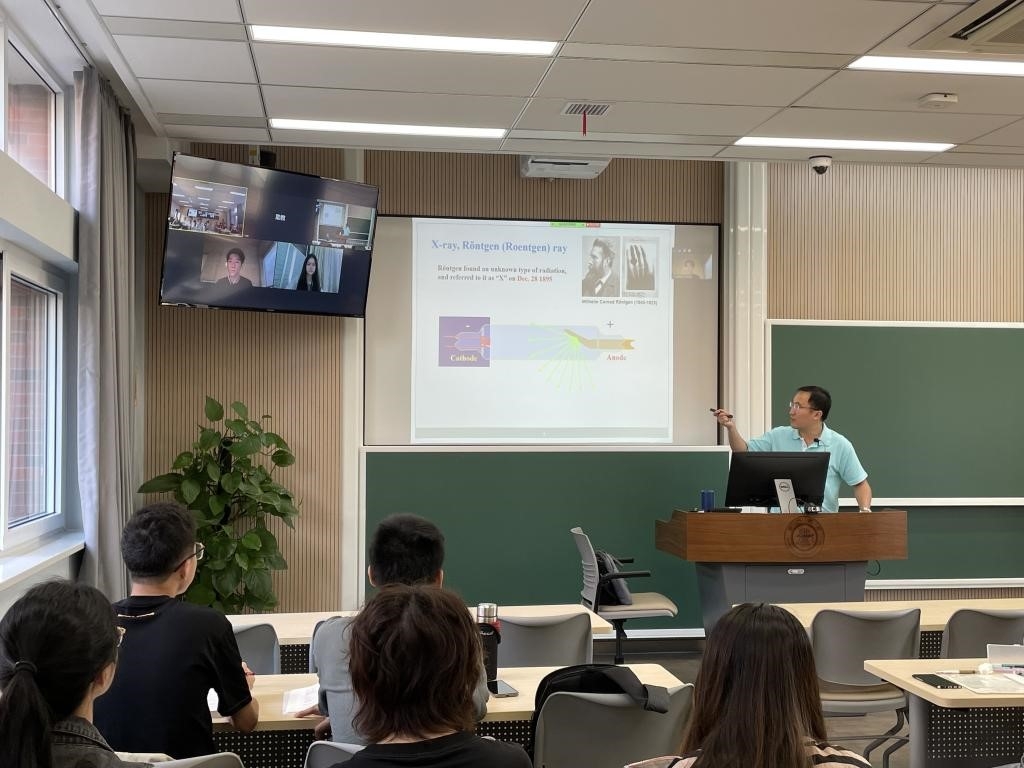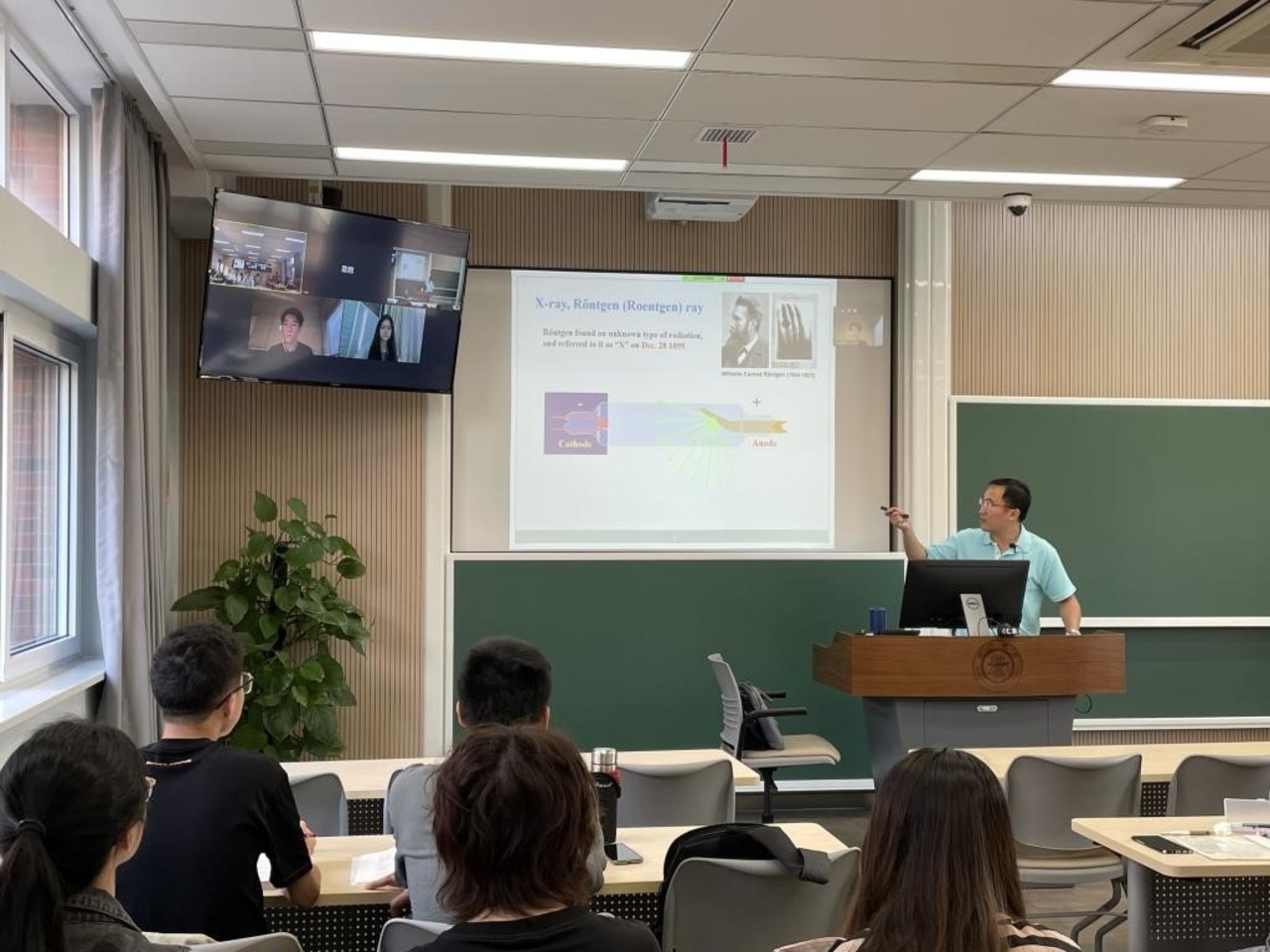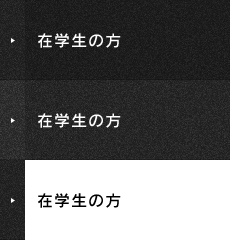上海交通大学オンラインプログラム: Jiao Tong Global Virtual Classroom 上海交通大学 2021年9月13日~2022年1月9日

留学時の学年: |
修士課程2年 |
|---|---|
所属: |
環境・社会理工学院 融合理工学系 原子核工学コース |
留学先国: |
中国 |
留学先大学: |
上海交通大学 |
留学期間: |
2021年9月13日~2022年1月9日 |
プログラム名: |
1. Purpose of the program
The main purposes of the program were the following four.
・To deepen the knowledge in the field by taking lectures by professors with vast international experience.
・To broaden the knowledge by taking lectures of interest outside of the own field.
・To interact with students from Shanghai Jiao Tong University and online students from other countries and gain international experience.
・To deepen understanding of different cultures and develop a global perspective.
2. Dates
2021/9/13~2022/1/9(4 months)
The time and number of lectures vary depending on the lecture you choose.
3. Program outline
From a total of 20 lectures on science, engineering, agriculture, medicine, humanities, social sciences, etc., students can choose the lecture they want to attend and take it online. The lectures were given in a hybrid format of offline lectures taken locally and online lectures taken from overseas. More than 90 students from 15 universities in 9 countries and regions in Asia, Europe, North America, and South America participated in this fall semester of 2021. Universities can share high-quality teaching materials and have a great opportunity for students from different regions and cultural backgrounds to exchange ideas and inspire each other in the same class.
4. Activities
I took a total of three lectures: two on my specialty and one on liberal arts. I want to introduce each of them one by one.
Fundamentals of Material Science Part 1 (Credit: 3)
Textbook: Fundamentals of material science and engineering
This lecture mainly covered the fundamentals of material science open for first-year students.
The constituents were as follows.
Chapter 0: Introduction
Chapter 1: Atomic structure and bonding
Chapter 2: Structure of solid materials
Chapter 3: Defects in Crystals
Chapter 4: Deformation & Recrystallization
At last, a final exam was given.
There were four classes of practical experiments, which online students could not attend, so we submitted a report assignment as an alternative measure. It had to be more than 5000 words related to the specific topic of material science. In total, we were given four homework assignments that took about an hour and a half for each through the lectures.
The professor was very good at English and the teaching. The progress was not so fast, and it was easy to get involved since our professor always paid attention to the online students. Overall, it was very nice to take this lecture and broaden my knowledge of material science.
Material physics (Credit: 4)
Textbook: Introduction to solid state physics & Introduction to quantum mechanics
This lecture mainly covered the material physics open for 3rd or 4th-year bachelor students. The lectures were divided into solid state physics and quantum mechanics. At last, a final exam was given.
Homework was assigned for every class, and it took much time to finish it. It was a little bit hard to do that all by myself. This was one of the more challenging aspects of online, as under normal circumstances, I could talk to other students and work on my homework with them. Unfortunately, since I hadn‘t learned the basics of quantum mechanics, I couldn’t catch up with the second half of the lectures, and I dropped out of the course. Therefore, I don’t know the difficulty of the final exam.
The professor was always paid attention to the online students. Unlike most of the lectures in Japan, it was an interactive class with the teacher constantly communicating with the students. The lecture was very valuable, and it was an excellent experience to attend it.

One scene from the lecture “Material physics."
The SDGs of the united nations (Credit 2)
The lecture aimed to spread the knowledge of the Sustainable Development Goals (SDG) of the United Nations and to evoke the interest in international governance that promoted exchanges between different cultural backgrounds. This course provided the international audience with a China perspective on SDGs. For each SDG, this course introduced the basics, reviewed the development status of China's relevant work, elaborated on case studies of China or other countries and regions, and discussed the potential challenges.
The content was as follows.
1. SDG1 No Poverty
2. SDG2 No Hunger
3. SDG3 Good Health and Well-Being
4. SDG4 Quality Education & SDG5 Gender Equality
5. SDG6 Clean Water and Sanitation
6. SDG7 Affordable and Clean Energy
7. SDG8 Decent Work and Economic Growth
8. SDG9 Industry, Innovation and Infrastructure
9. SDG10 Reduced Inequalities
10. SDG11 Sustainable Cities and Communities
11. SDG12 Responsible Consumption and Production
12. SDG13 Climate Action
13. SDG14 Life Below Water
14. SDG15 Life on Land
15. SDG16 Peace, Justice and Strong Institutions & SDG17 Partnerships for the Goals
16. Group presentation
At the last lecture, we did a group presentation. The groups consisted of 4 to 6 members. In our group, we communicated by using WeChat and created the presentation. The evaluation of the class was done by writing a report based on the final presentation.
In each lecture, we discussed the topic of the day. I was able to express my own opinions based on what I learned that day and listen to other students’ ideas, which broadened my thinking.
5. Reflection on the syllabus
The syllabus is as follows.
1) To have clear goals related to one's future plans and actively participate in various activities.
2) To be able to take the initiative in collaboration from a multifaceted perspective with others who have a different country of origin, native language, customs, culture, etc.
3) Be able to make concrete proposals from a multifaceted perspective regarding their country's proud history, culture, and industry, as well as issues related to their country about the world.
1) To have clear goals related to one's future plans and actively participate in various activities.
My main goals were two things as follows.
1. To deepen the knowledge of my research field and make use of it for my research at the Tokyo Institute of Technology.
2. To broaden my knowledge by taking lectures outside of my field related to SDGs.
3. To interact with students from Shanghai Jiao Tong University and online students from other countries and gain international experience.
I could have clear goals for the program and actively participate in the lectures.
2) To be able to take the initiative in collaboration from a multifaceted perspective with others who have a different country of origin, native language, customs, culture, etc.
I was able to show this, especially in the group work in the SDGs lecture. I worked with students from China and online students from France and Malaysia.
3) Be able to make concrete proposals from a multifaceted perspective regarding their country's proud history, culture, and industry, as well as issues related to their country about the world.
This time, by thinking about things from the perspective of China, I was able to get a bird's eye view of Japan from the outside. I was able to think about my country’s issues and my proposals to address them.
Advice to other students
Overall, this program was a precious opportunity to learn many things while being in Japan. I hope that many students will participate in this program and broaden their vision. It is possible to take a minimum of one class and simultaneously take classes at Tokyo Tech or do research.


